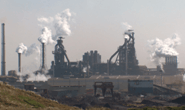Steel Products
AGC: Rising Costs Threaten Hiring in Construction
Written by Sandy Williams
November 18, 2018
Labor costs and a shortage of skilled workers may result in fewer construction jobs next year, according to the Associated General Contractors of America.
Forty-four states and the District of Columbia added construction jobs between October 2017 and October 2018, while 36 states and D.C. added construction jobs between September and October, according to an analysis by the Associated General Contractors of America of Labor Department data. Association officials said that firms in most parts of the country are adding staff to keep pace with growing demand for construction, but cautioned that rising labor and materials costs could undermine future demand.
“Construction activity continues to expand at a steady clip, with employment growing by more than 10 percent during the past year in five states and by more than 5 percent in another 18 states,” said chief economist Ken Simonson. “As contractors pay more for labor and most of the materials they use to build, construction costs will climb, potentially dampening future demand for their services.”
Texas added the most construction jobs during the past year (49,900 jobs, 6.9 percent). Other states adding a large number of new construction jobs for the past 12 months include: Florida (43,400 jobs, 8.5 percent), California (30,000 jobs, 3.6 percent), Georgia (21,600 jobs, 11.6 percent), Arizona (18,000 jobs, 12.1 percent) and New York (15,600 jobs, 4.1 percent). Arizona added the highest percentage of new construction jobs during the past year, followed by Georgia, Nevada (11.4 percent, 9,500 jobs), Oregon (10.5 percent, 10,400 jobs), New Hampshire (10.3 percent, 2,800 jobs) and Florida. Construction employment reached a record high in five states: Massachusetts, New York, Oregon, Texas and Washington.
{loadposition reserved_message}
Six states shed construction jobs between October 2017 and 2018. The largest declines and steepest percentage losses occurred in New Jersey (-3,800 jobs, -2.5 percent), followed by South Carolina (-1,700 jobs, -1.7 percent), Oklahoma (-500 jobs, -0.6 percent), Hawaii (-300 jobs, -0.8 percent) and Mississippi (-300 jobs, -0.7 percent).
Among the 36 states with one-month job gains between September and October, Florida (3,000 jobs, 0.5 percent) and California (3,000 jobs, 0.4 percent) had the largest gains, followed by Arizona (2,500 jobs, 1.5 percent), Georgia (2,500 jobs, 1.2 percent), Washington (2,500 jobs, 1.2 percent) and New York (2,500 jobs, 0.6 percent). Iowa added the highest percentage of construction jobs for the month (2.0 percent, 1,600 jobs), followed by Wyoming (1.9 percent, 400 jobs) and Rhode Island (1.6 percent, 300 jobs).
From September to October, construction employment declined in 12 states and was unchanged in Connecticut and Maine. Louisiana lost the most construction jobs (-1,900 jobs, -1.3 percent), followed by Oklahoma (-900 jobs, -1.2 percent) and Michigan (-900 jobs, -0.5 percent). Mississippi lost the highest percentage of construction jobs in October (-1.6 percent, -700 jobs), followed by Montana (-1.4 percent, -400 jobs), Louisiana and Oklahoma.
Association officials said widespread construction employment gains are a sign of strong demand for construction services in most parts of the country. But they cautioned that without new investments in career and technical education, immigration reform and swift resolution of trade disputes, labor and materials costs will continue to climb.
“Firms in many parts of the country are hiring as fast as they can find qualified workers to bring onboard just to keep pace with demand,” said Stephen E. Sandherr, the association’s chief executive officer. “But at some point, the increasing costs of labor and construction materials are going to drive construction prices to the point where many customers reschedule or rethink their projects.”

Sandy Williams
Read more from Sandy WilliamsLatest in Steel Products

Final Thoughts
The difference: The spat with Turkey was a big deal for steel. This time, the 50% reciprocal tariff for Brazil – if it goes into effect as threatened on Aug.1 – hits everything from coffee and to pig iron. It seems almost custom-built to inflict as much pain as possible on Brazil.

CRU: US rebar and wire rod prices rise alongside S232 increase
CRU Senior Steel Analyst Alexandra Anderson discusses current market and pricing dynamics for long steel products in the US.
CRU: Excessive global supply could hit rebar mill investments in US
Following the onset of the war in Ukraine in March 2022, concerns about import availability and expectations of rising demand from President Biden’s Infrastructure Bill pushed US rebar prices to record highs. In response, a flurry of new mills and capacity expansions were announced to meet the rise in demand from growth in the construction […]

Steel buyer spirits tempered by soft spot market conditions
Steel sheet buyers report feeling bogged down by the ongoing stresses of stagnant demand, news fatigue, tariff negotiations or implementation timelines, and persistent macroeconomic uncertainty.

CRU: US stainless prices to rise on expanded S232 tariffs
Stainless prices in the US market will rise, following price increases by major US producers. Our base case scenario incorporates higher US prices in the near term, despite the initial negative reaction by the market. US stainless prices will go up in 2025 H2 and will stay elevated in 2026 as tariffs on stainless […]
